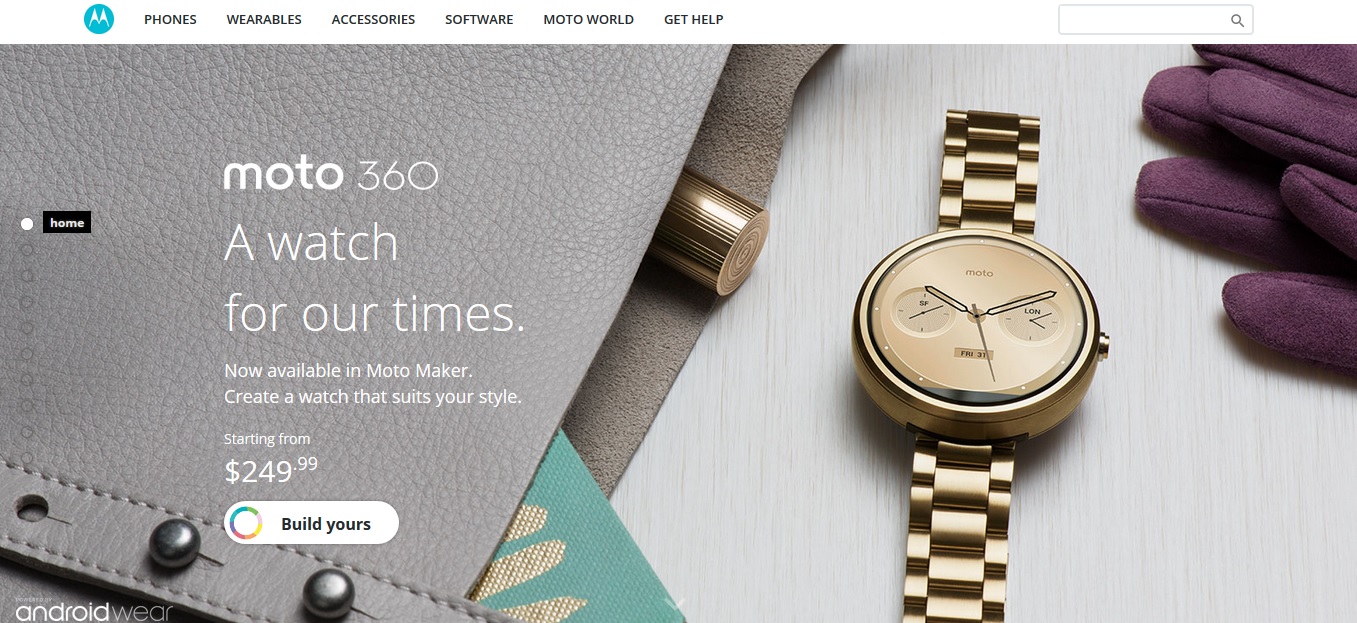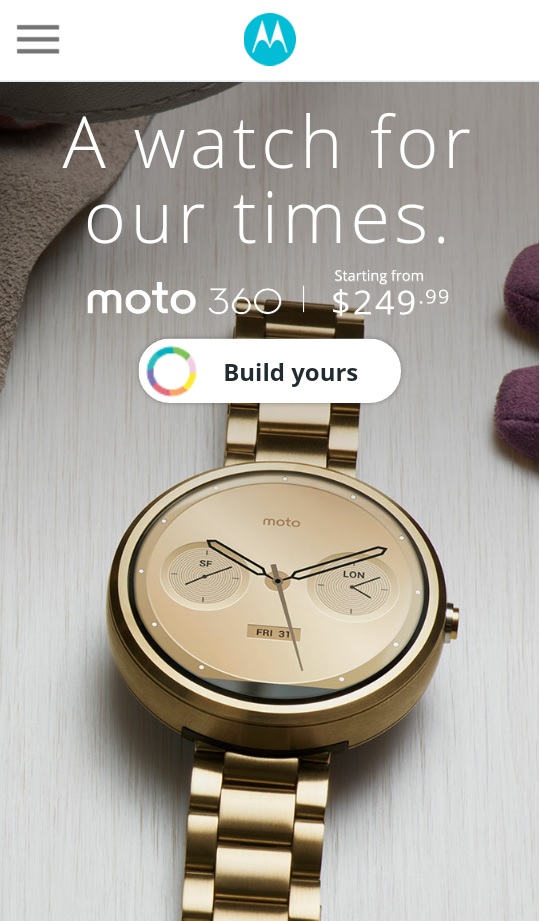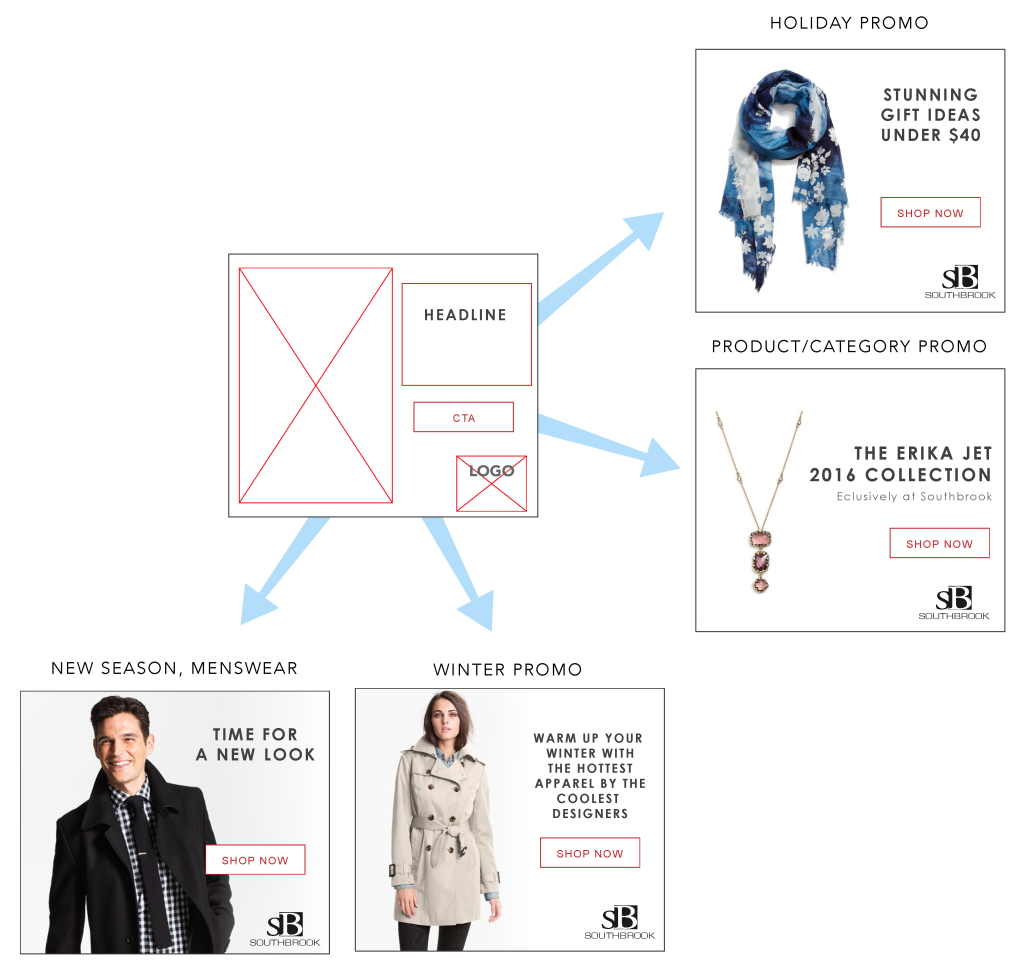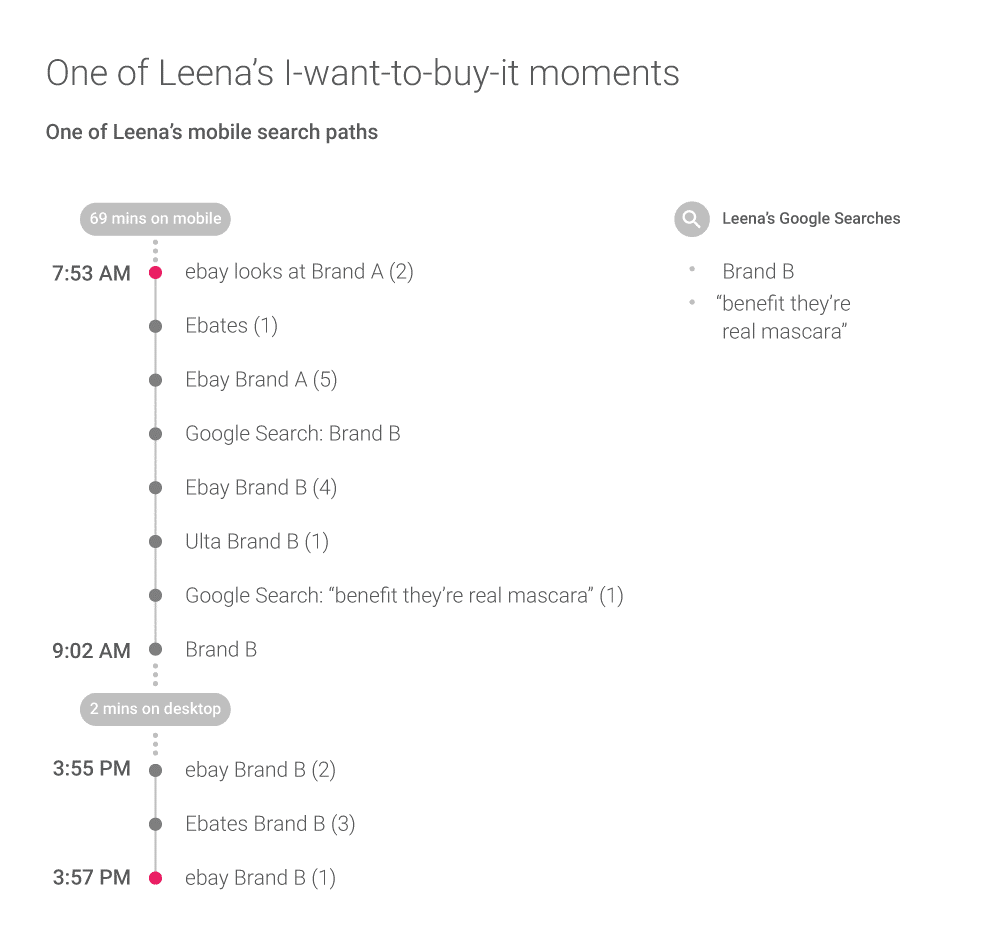How to Write Headlines that Actually Attract Attention
Headlines really matter if you want to attract those clicks and shares.
Copywriters know, whether it’s print or digital, that headlines are essential to your content’s success. The more people who read your catchy headline and have their interest piqued, the more likely they are to continue reading your content and even share it. In fact, David Ogilvy believed that headlines are worth 90% of advertising dollars.
So yeah, good headlines matter, a lot.
But writing awesome headlines that actually attract attention is a challenge even at the best of times for marketers and publishers. With that in mind, we’ve created an infographic that’s going to make your life easier – or at least, your headline writing life easier. Scroll down to learn the best practices now.

Want to learn more? Connect with our team at sales@clearpier.com
How to Build Perfect Mobile Landing Pages
If you aren’t using mobile friendly landing pages, you’re losing out on conversions and you’re wasting money. Here’s how to fix that.
Let’s get this straight: mobile landing pages and desktop landing pages are not and should not be the made same. If you aren’t using mobile friendly landing pages, you’re losing out on conversions and you’re wasting money.
You know, we know, everyone knows by now that you have to be on mobile because its a key platform that facilitates numerous touch points along the buyer journey. Google’s data tells us that mobile is the likeliest starting place for online activities, whether it be researching a product through reviews or comparing prices, that can ultimately culminate in a sale down the line. In the past, in the case that research that started on mobile ended in a conversion, that conversion would most commonly occur on desktop.
That’s not the case any more. The growth of mobile commerce is outpacing traditional e-commerce according to ComScore reports. A third of all online sales come from mobile devices now.

So for the sake of winning more conversions, getting more sales, and just plain making more money on mobile, this article breaks down exactly how to build the perfect mobile landing page.
1. Design with Speed in Mind

Mobile users demand instant and easy to digest information that cuts to the chase. They are fast and furious – any latency or slow load times make them agitated and immediately turns them off. Building landing pages for mobile users demands attention to user experience. That means quick load times, short forms, and catchy copy. Make sure you’re optimizing so that you have no slow-loading content.
In same cases, getting rid of images all together in favour of concise copy might work better. Page load times factor into strong user experience which contributes to higher conversion rates overall. Search engines also factor load times into their ranking process as well so keep in mind that slower mobile loading times can throw off your search results and ultimately effect your bottom line.
2. Keep Your Copy Short and Sweet Without Losing Clarity
Keeping your headlines concise is just general good practice. But on mobile, its even more important because of how easily distracted users are. Remember, mobile users are always multitasking and so their attention is already often divided. Don’t distract them further. Worst yet, don’t annoy them by making them have to read so much.
You know this first hand through your own mobile user behaviour. How often do you really read a full article through from A to Z? How often do you just briefly scan a page for the bare minimum info? Why do you think point form listicles are a thing now? Because we live in an age of short attention spans.
Thus, for mobile landing pages headlines should be as short and succinct as possible while all other copy should be minimized. The best way to practice writing clear and concise copy is by writing then editing, over and over and over again until you have the bare minimum that works.
3. Use Strong and Immediate CTAs or Click to Call
Keeping CTAs above-the-fold on mobile landing pages don’t always work, simple due to the variety of screen sizes out there. So the above-the-fold rule doesn’t necessarily always apply. That being said, you should still make sure your CTA is clearly visible and easily clickable by a user’s fingers (and also that it works).
Make sure you’re also optimize for smaller screen sizes. That means making your buttons fairly large. If click-to-call is applicable to your business, swap out your normal CTA for a clickable phone number instead.
Look at the difference between this desktop landing page:

Here is the mobile version:

4. Keep Forms Short and Reduce Optional Fields as Much as Possible
We’ve mentioned already that mobile users are really distracted and easily agitated. So unlike on desktop where visitors may be willing to fill out long forms and provide additional information, mobile users are immediately turned off by too many forms.
The reasoning? Screen size. Forms are hard to fill out on small mobile screens what with our giant thumbs and these tiny little fields. Nobody has time for that! Even dropdown menus can be problematic on mobile as well. How often have you been frustrated by dropdown menus and millions of fields on a mobile landing page and just went “Urgh, forget this”? So then you know what I’m saying!
Our advice? Avoid them if you can so that you reduce the likelihood of visitor resistance.
Here’s an excellent reduction of form fields from desktop to mobile:

5. Avoid the One-Size-Fits-All Mentality
Don’t you just hate when you land on a mobile page and you have to pinch the screen to zoom in to see what the message is? Or an image loads and its so big, it doesn’t even fit on the page and then you get distracted about why you even came to the page… and before you know it, you’re out of there.
For the love of conversion, don’t treat your mobile landing pages like desktop. Make sure your designs are either a) responsive or b) adaptive.
A responsive landing page automatically resizes to fit any screen size. With responsive, no matter the device your audience is using they should be able to see your landing page seamlessly across screens which is a good thing because there are multiple user touch points in the buyer process on numerous devices. It’s important the responsive designs for landing pages are used to maintain strong user experience and drive conversion.
Here is an example of responsive landing pages from Skinny Ties.

Adaptive landing pages on the other hand are a little different in that the content of the landing page conforms or “adapts” to the screen size by displaying only the most relevant and important components. Adaptive landing pages are like the nutshell version of a desktop landing page or website.
Here is an example of an adaptive landing page:

Key Takeways
- Optimize your landing pages for fast load times
- Keep copy short and sweet (without sacrificing clarity)
- Use strong CTAs or Click-to-Calls
- Keep your forms short and minimize distractions
- One-size does not fit all landing pages
Keep these key takeaways in mind when you set out to start your next campaign. Build better landing pages and watch your conversions grow.
Want to learn more? Connect with our team at sales@clearpier.com
Top 10 Marketing Trends of 2017
Demand for Performance to grow as technological innovations and marketing strategy advances in 2017.
https://www.youtube.com/watch?v=X7HLEMcop8U&t=4s
2016 was a big year for marketers around the globe, filled with major shifts across the digital media landscape. AR quickly entered the mainstream with the swift rise (and fall) of Pokémon Go, perhaps one of last year’s biggest pop-culture phenomenons. Everything online was about or delivered in the form of video, and changes in direct-on-social-selling has altered the buyer journey.
With all the changes that occurred, what can we expect as we move swiftly into the new year?
Here are our team’s predictions on the biggest marketing trends of 2017.
1. Influencer Marketing budgets will double

Influencer marketing, continues to be an effective way for advertisers to reach niche audiences.
In 2017, investments by brands into influencer marketing may grow by 48%. As a strong strategy to get in front of audiences through trusted recommendations while simultaneously getting around the problem ad blocking, influencer kills two bird with one stone. You can bet that this is one channel that won’t be slowing down any time soon.
2. More emphasis on Interactive Content Marketing

Move over read-only content, interactive content is about to shake things up.
Marketers know all too well that attention spans are getting shorter, and interactive content may be the answer to cut through the noise to get audiences to engage with branded content at a deeper level.
From quizzes, polls, surveys, and contests to infographics and before-and-after reveals, interactive content seems to be growing in popularity. Many content experts believe it may in fact be a better way to educate readers while simultaneously allowing marketers to collect data.
3. Demand for Performance will Grow alongside demand for brand safety
More brands, agencies, and advertisers will shift their budgets towards Performance in 2017 to better align budgets with ROI.
Companies will look to work more closely with performance partners that have the technology and experience needed to better manage, track and optimize their campaigns rather than trying to build a performance unit in-house which requires a steep learning and development curve for immediate success. Vendors who can guarantee performance, scale, and brand safety will also grow in demand.
4. Social Media continues to be a strong channel for brands, content and SEO strategy

Facebook isn’t going away. Influencer marketing will be heavy on Instagram. And with over 100 million daily active users and 400 million snaps per day, every marketer’s Snapchat game better get on point.
But there will be shifts. Capturing moments and experiences will be a valuable and trendy tactic for brands to reach social media savvy audiences. It’s no longer enough to post about what it was like to be at an event, wear a new shirt, or taste a new recipe – now marketers need to show audiences what it feels like. Real-time posting will be ever more in demand to make experiences immersive and genuine.
5. Virtual/Augmented Reality will further be explored
Virtual and augmented reality is here! Snapchat and Pokémon Go have done wonders to expand the horizon for augmented reality. The question for brands now is how to best utilize the technology.
While some businesses may still be on the fence about AR, e-commerce retailers without brick and mortar stores may find the technology advantageous. As the technology and its accessibility continues to advance, we can be sure to find more marketers jumping onto the AR/VR bandwagon.
6. Video + Live Streaming
Video will continue to dominate in 2017 and we will see the use of live streaming grow.
It’s important to note, however, that video will be driven by mobile which means marketers will need to maintain a mobile first strategy. With over 90% of Facebook feeds filled with video, and mobile video stats ballooning since 2015, we can expect the shift towards video to continue.
Though it’s a time consuming medium, the demand for video among audiences is only growing and marketers need to embrace the change.
7. Native Advertising will grow but face scrutiny

It’s been a somewhat problematic year for native advertising given the discussions around the problem of ‘fake news’ online. We know that native advertising is designed to promote branded content in an organic, uninterrupted way, but 2016 brought to popular attention the need for marketers to run creative native content responsibly.
Disclosure – that is, clear identification of paid native ads around editorial content – will remain the biggest concern for native advertisers this year. The IAB predicts that in-feed native will continue to make up the bulk of native ad revenue, and brands will continue to shift their ad dollars towards native.
8. Mobile First – Always

In the past several years, it has been drilled into our heads that marketers need to be on mobile because that’s where consumers are.
We’ve all wisely shifted to mobile. Indeed, according to venturebeat.com, approximately 59.5% of Google’s net global ad revenue will come from mobile ads this year (up from 45.8% in 2015).
While the shift to mobile has resulted in the growing monetization of apps, as well as increased demand for video, the problem remains: bots follow the money trail. CMO.com predicts that ad fraud bots will behave even more like humans in 2017, making it ever more difficult to detect.
Advertisers will need to be vigilant and persistently press vendors for transparency on how their budgets are being spent, which is why many Canadian advertisers are beginning to shift their attention to private marketplaces.
9. Everything will be personalized

To reach the right audience at the right time, we as marketers need to send the right message and that requires personalization.
In 2017, personalization will continue to be top-of-mind as audiences become more acutely aware and critical of what and how marketers communicate with them. Marketers will need to keep audience lists healthy and well segmented according to behaviour, preferences, habits, geo-location and more to continue winning positive audience attention and engagement.
10. Customer Experience will come first

Understanding the importance of the customer experience is at the core of any strong marketing strategy. Businesses that embrace a customer-centric approach will find more success in the year ahead.
But how do you make the shift? Consider the following:
- Turn customer service into an essential business mantra, across departments
- Listen to your customer’s feedback and make changes that answer their needs
- Re-imagine social media as an extension of customer support
Now you know the biggest marketing trends to watch out for in 2017. So get out there, and start making awesome happen all year long.
Want to learn more? Connect with our team at sales@clearpier.com
4 Ways to Optimize Your Holiday Campaigns for Maximum ROI
From segmenting your data to using a CMP; consider the following.
Put away the pumpkin spice lattes, it’s nearly time to switch over to the egg nog. Every good marketer has at this point fully planned and scheduled their holiday marketing strategies. Campaigns are just about ready to launch. But of course, there is always room for improvements.
Before you launch those campaigns, consider the following 4 ways to optimize your performance campaigns for this holiday season.
- Target creatives according to segmented audience data
If you combine the power of compelling creatives with insightful audience data, you can target your audience more precisely and with relevancy. Consumers are much more inclined to engage with ads that are relevant to their needs. The more interruptive the ad, the more likely they’ll put the blinders on.
Let’s take the Amanda Foundation’s fantastic campaign which is a prime example of how useful segmented audience data can be for targeting.
Each of the advertiser’s creatives uses a shelter animal to promote adoptions. But the messaging is uniquely tailored to the audience based on known browsing behaviour/interests, and demographic data.
So if the viewer is a known foodie who loves trying new restaurants, delivering them creative number three would be perfect to inspire engagement.

- Consider using a Creative Management Platform
Creative management platforms (CMPs) are powerful design tools for the programmatic marketer. CMPs are less technical than Dynamic Creative Optimization tools (DCOs) but also allows designers to make large ad sets as well as small changes to individual creatives. CMPs often have pre-set creative templates that cuts down on design time and makes duplication and customization simple.
It’s a scalable creative production environment where you can create and iterate on only the best performers.

- Remember the importance of “Micro Moments” on mobile
According to Google, 76% of people who conduct a local search on their smartphone visit a business within 24 hours and 28% of those searches results in a purchase. A lot of research is in the pre-sale buyer journey and this will spike as we head into the holiday season.
Google’s series on “I-Want-to-Buy Moments” examined one shopper’s micro-moments (by way of searches, clicks and website visits) over the course of one month to understand how much and how digital research played a role in her purchasing decisions.
The study shows that there are over 1000 digital touch points over a single month leading up to the consumer’s purchase.

Google also shows us the breakdown of her mobile versus desktop search paths:
 So how can marketers win in these ‘micro-moments’?
So how can marketers win in these ‘micro-moments’?
Be there and be useful. Considering how much research goes into a consumer’s journey now a days, retargeting your ads is a good way to re-engage consumers with buying intent. Remember, although a lot consumers do their research on mobile, buying still happens mainly on desktop. Even upon checkout, marketers can reintroduce promotions, deals, and suggested products for upselling.
- Rotate your ads – or run dynamic creatives
Static banner ads are alright, if they’re well targeted. But banner blindness is indeed a real problem. Keep your visitors curious by rotating fresh creatives in to replace stale ones.
You can up your performance by employing dynamic html5 creatives as well. Why show case only one product, when you can highlight multiple? This is where using a CMP comes in particularly useful as these platforms are often equipped with dynamic creative templates where you simply have to plug in your raw assets.
Best Buy does a really good job at this. Get more out of your ad placement and do more to entice with fresh creatives.

So if you’re not already doing these four things to optimize your campaigns, now is the perfect time to start before the holiday mayhem begins.
Want to learn more? Connect with our team at sales@clearpier.com.




